by Kenan White | Jan 13, 2022 | Basics, Books & Design, Flowers, Gardening, Herbs, Inspiration, Miscellaneous, Wildlife |
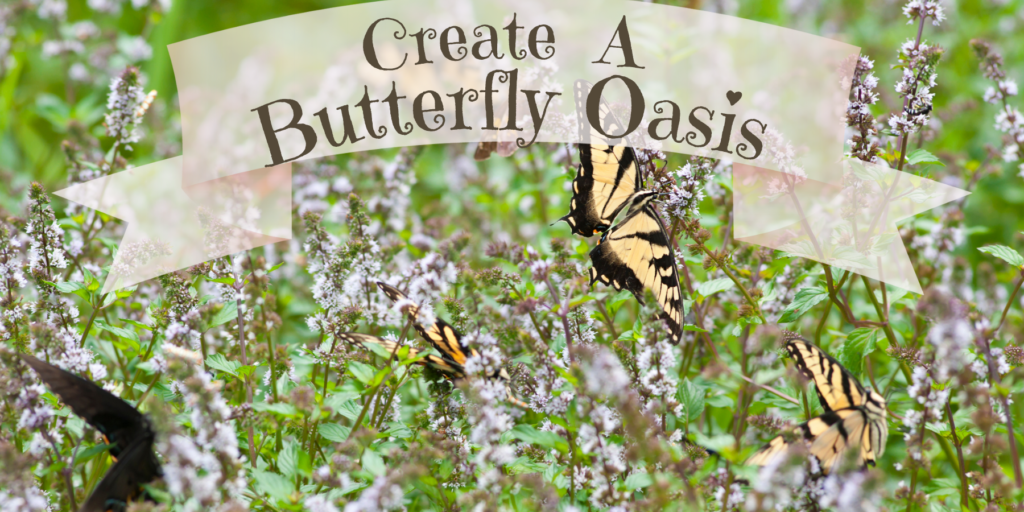
Butterfly gardening can be a wonderful way to experience wildlife in your garden, encourage pollination, and it takes very little maintenance, giving you more time to enjoy the beauty of watching butterflies flock to your plants. Many people who have maintained a butterfly garden for such a long time actually enjoy having visitors to come and look at their creation. This is also a great way to give back to your local ecosystem, as many natural habitats for butterflies and other pollinators have been destroyed by urban development and human interference. We always let about half of our test garden go wild in the summer, in addition to the many flowering shrubs and trees throughout the yard, to give butterflies a safe place to feed and lay their eggs. This is common practice, and we let this happen until the flowering shrubs and trees start to become an issue.
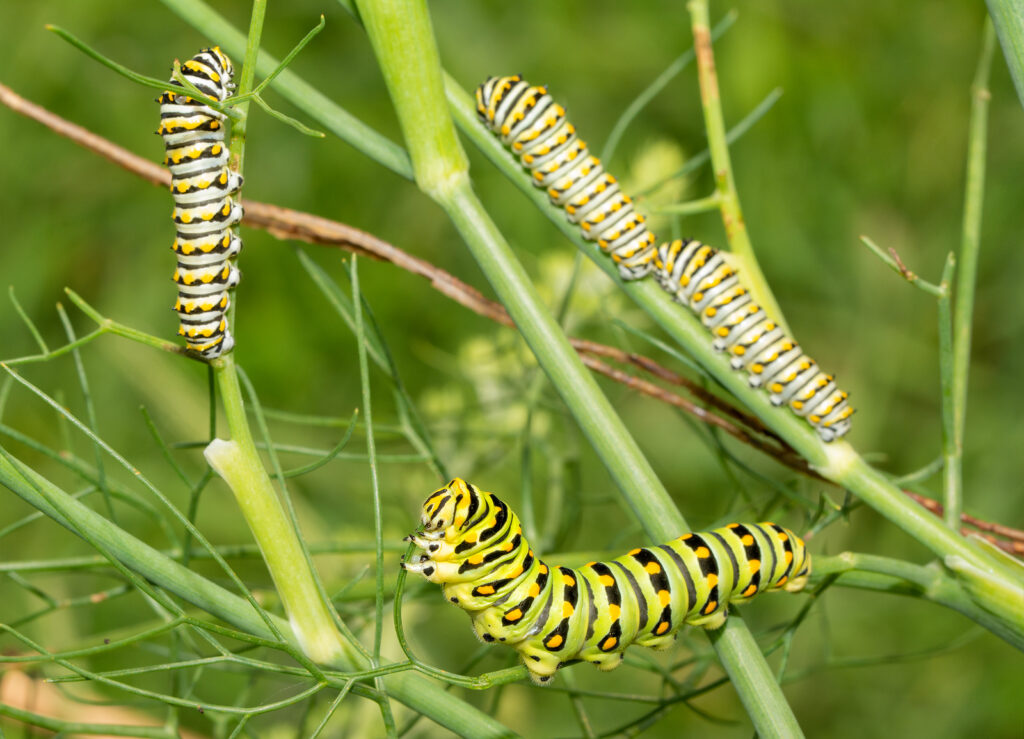
Here’s a wonderful photo showing a Fennel plant hosting Eastern Black Swallowtail butterfly caterpillars
In planning your butterfly garden, make sure to plant plenty of host plants and feeder plants. Host plants are specific herbs, flowers and other plants, that mature butterflies lay their eggs on because they create a safe haven for their young who will also feed on these plants once they become caterpillars. Be aware that these plants will be the sole food source for caterpillars, so it will be pretty heavily snacked upon. Because these may look rather ragged by the time the caterpillars are done munching on them, you may want to add these to the back of your garden, but still close to feeder plants so that the caterpillars are able to find them easily in their next stage of life. Some common host plants include Fennel, Italian Flat Leaf Parsley, Dill, Broccoli, Sunflowers, and Butterfly Flowers (also known as Milkweed).
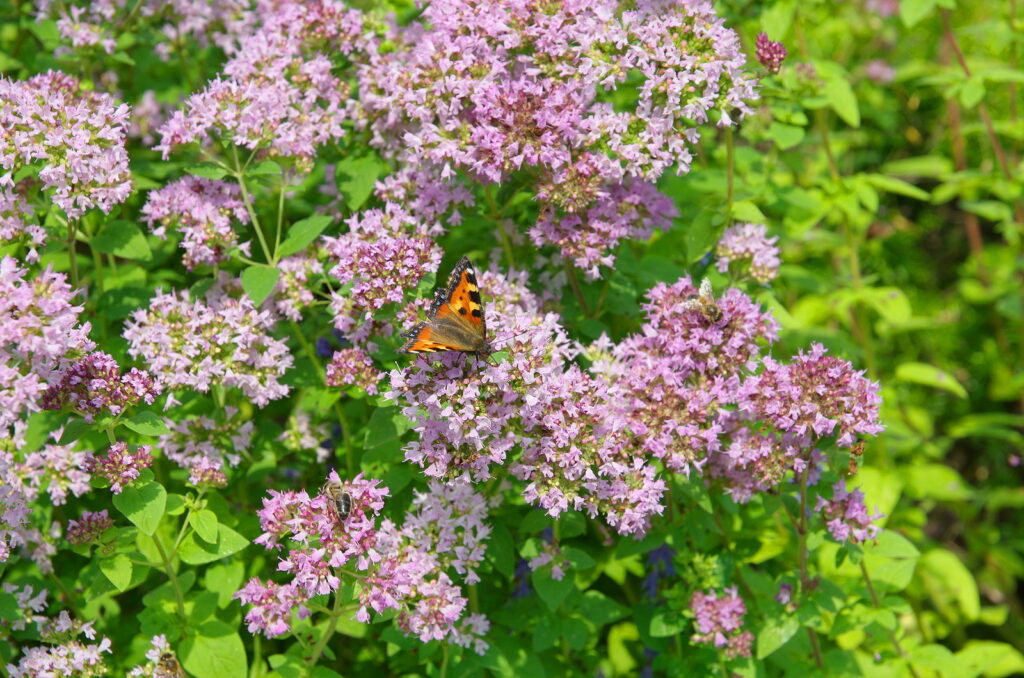
Butterfly on the flowers of oregano (lat. Origanum vulgar)
Feeder plants are nectar rich plants that adult butterflies will feed on throughout the season. These will also attract other helpful pollinators to your garden like honeybees and hummingbirds! Feeder plants tend to be fragrant and brightly colored, and you may be surprised to find that you already have many in your garden already. Some common varieties from our garden include Lantanas, Buddleias (also known as “Butterfly Bushes”), Joe Pye Weed, Bee Balm (Bergamot), Garlic Chives, and Oregano.
- Remember to plant your perennial butterfly plants toward the back of your garden and your annuals toward the front, for easy seasonal replacing.
- Don’t forget to incorporate herbs into your butterfly garden! Many herbs are perennial and will provide you with a safe haven for caterpillars and beautiful blooms when they flower. You can also use them in many other ways!
- Choose an area that is protected by the wind, as butterflies are delicate and don’t want to fight strong breezes to feed.
- Provide a water source, such as a birdbath or a shallow bucket filled with water with sand in the bottom.
- Avoid using pesticides on your plants as these will harm the butterflies and their young.
by Kenan White | May 21, 2012 | Books & Design, Flowers, Gardening, Herbs, Life on the Farm, Miscellaneous, Wildlife |
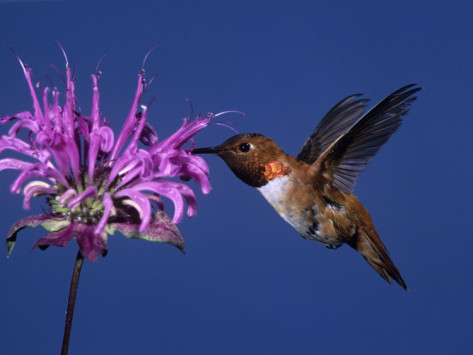
Hummingbirds love sweet,tubular-shaped flowers like those of the Bee Balm herb plant.
We absolutely LOVE watching hummingbirds dart through our gardens on a warm Summer evening. Attracting hummingbirds to your garden is a wonderful way to enjoy seeing these fast-flying little birds’ aerial antics up close, and will provide you with hours of entertainment from Spring until Fall. Also a very beneficial garden companion, hummingbirds will eat bugs and help increase pollination in your garden be flitting from bloom to bloom.
Hummingbirds do not have a sense of smell, and are instead attracted to brightly colored (usually red), trumpet or tube shaped flowers which their long beaks are specially designed to drink from. Because hummingbirds fly so fast (up to 30 miles per hour!), they spend most of their time foraging to keep their energy levels high. Their need for fuel is so high that hummingbirds may drink up to eight times their body weight in nectar in a day!
Make sure to plant these hummingbird friendly herbs and flowers to make your garden a great place for hummingbirds to feed:
We also have a variety of hanging and staked feeders that are specially designed to attract hummingbirds. Made from recycled glass, the colors change from a lovely orange and yellow color to a vibrant flame red that hummingbirds are drawn to. Click here to view our video and watch the hummingbirds swarm these lovely, hand crafted feeders.
Other tips for creating a hummingbird haven in your yard:
- Place hummingbird feeders near your garden to attract hummingbirds to your plants.
- Place the feeders at different heights throughout your yard and garden, as some species prefer different feeding patterns. Placing feeders in different parts of your yard will help keep territorial males from dominating all of the nectar.
- Make sure to keep your feeders clean and full of fresh nectar to ensure that the hummingbirds don’t get sick. Cleaning the sugary substance from the feeder’s holes may also help prevent attracting bees or wasps, as they may convene to find leftovers.
- Make sure to offer a good, clean water source for the hummingbirds to drink and bathe in, such as a bird bath which is shallow enough for them to play in.
- Add strings that run the length of your garden, above your plants to give hummers something to perch and rest on while flitting from flower to flower.
by Briscoe White | Jan 13, 2012 | Life on the Farm, Miscellaneous, Wildlife |
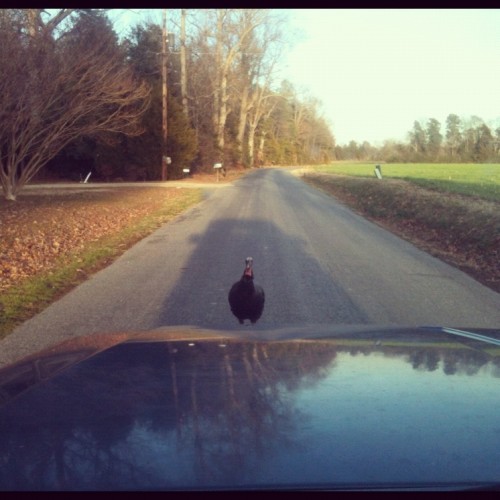
On her way home, our Marketing Director, Caroline, encountered a pretty tough bird. It’s a good thing it didn’t have a flock, or this might have gotten ugly…
There’s one house on the way to the farm, that I always slow to a crawl when I past. The Raniers. In the mornings, their motley crew of dogs, comprised of two labs, one black and one yellow; a stout little beagle, and a bug eyed chihuahua bask in the warm sun in the middle of the one lane country road, or explore the ditches and field adjoining the road’s worn pavement. They’ve become kind of like friends, as I pass them each morning and think “good dogs” to myself and while struggling to get that last drop of coffee out of my travel mug.
The afternoons are a bit of a different story. Replacing my familiar furry friends is a flock of nervous barnyard fowl, ranging from roosters to chickens in various and sundry breeds, and a wild turkey. Yes, I said wild. Apparently, Jamie and Lori, the owners of this tiny ranch, raised this turkey from an egg their son Hunter found. The turkey has grown to assimilate to its much smaller family of chickens without even noticing that its giant stature makes it so different. Now, while I wish no ill will on Hunter’s hand-reared turkey, I do have a particular penchant for dining on wildfowl, especially in the fall – as we all do. I have friends who have invested in a game cam which they have been using to locate and pick out turkeys roaming in the wilderness. Maybe they will let me join them someday; I find that sort of technology interesting and I’d like to see it in use.
On my way home, like any other day, I slowed as I approached the birds while they meandered across the road, scratching and pecking in the dirt that surrounds the blacktop. The only thing different about this encounter was that the turkey stood firmly in the middle of the road, refusing to budge. As I nudged my car closer, it began walking toward me, never breaking its defiant gaze. I finally put the car in park when I realized that I wasn’t going to win this game of “chicken” (pun intended), and stared back. It looked at me as if to say “this is my turf” without caring in the least that I was in a Jeep, and that it was outweighed and out horse powered. I jumped out and shooed it out of the road, and to my surprise as it slightly side stepped my path, it pecked at me! I jumped into my car and looked in the rear view as I began to pull away: the turkey was there. As if from some nightmarish Hitchcock movie, I was now being stalked mercilessly…by an evil turkey. I sped up, and he sped up. It wasn’t until I’d hit almost 25 MPH that he gave up his chase for an easier pursuit.
I got a good laugh from my friends when I told them about my day and my face off with the ornery bird, and still cautiously drive past the Ranier’s in the afternoon, always looking back for fear of that crazy turkey!
by Briscoe White | Aug 12, 2011 | Miscellaneous |
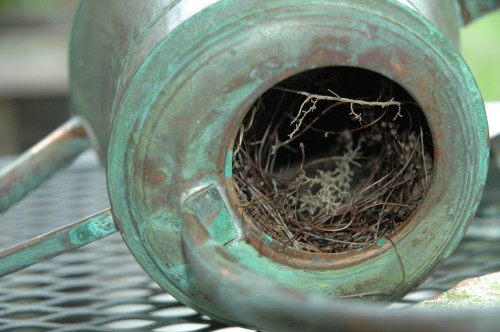
Carolina Wrens will nest just about anywhere...even in our empty watering can!
Carolina Wrens, though territorial about their range, are not picky about where they nest. Old boots, propane tanks, watering cans, mailboxes and pots…these are just some of the man made abodes that wrens have claimed as their “home sweet home”. Using everything from small sticks, moss and roots, to snakeskin, plastic bags, hair and paper, Wrens are resourceful home builders!
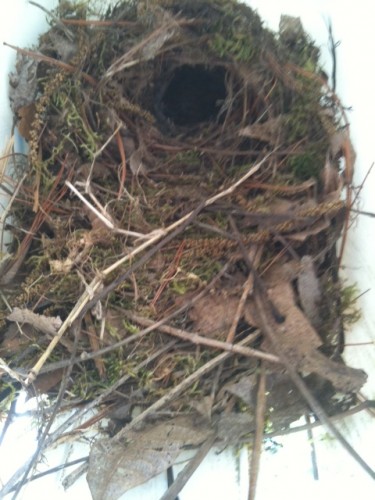
Wrens built this cozy nest in our marketing director, Caroline's, grandma's newspaper box!
The mating pair, which stays together for life, spend their time foraging for sturdy materials for the curved outer walls, and finish the inside up with softer nesting materials. Wrens may also build many mock nests throughout their territory, which are commonly called “cock’s nests”, choosing their favorite home for the nesting season once they are actually ready to mate. These domed nests are never used more than once and usually take about three days to construct. Once finished, the pair mate and the female lays a clutch of between three and seven small eggs that are cream colored with small brown speckles. To watch them in action, check out this great YouTube video of a pair of Carolina Wrens adding to their nest! Building a Carolina Wren Nest.
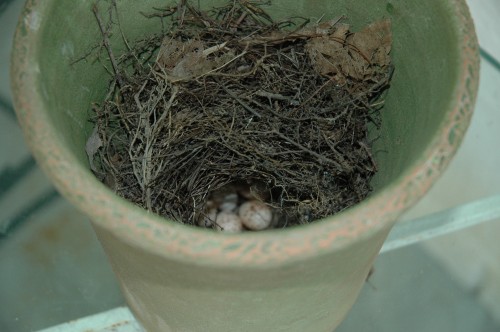
Our wrens chose the stylish pot on our office's front porch to nest in. They must not be bothered by the constant activity here since they've already laid eggs!
For a hilarious and heartwarming story with great pictures documenting the baby wrens, check out this website on the wren’s unusual nesting locations, and read about Karen Ouimet’s indoor wren experience!
by Briscoe White | Feb 2, 2011 | Exploring, Miscellaneous, Wildlife |
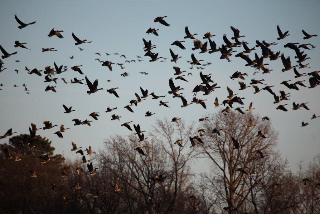
Photo Courtesy of Brad Fenson
Working in the greenhouse today, we were lured from our mundane task by the uproar of several hundred, maybe a thousand Canadian Geese in the adjacent field. After a few moments of loud and excited goose talk, we all ran outside to see them fly over. Whatever it was that scared them was not so bad because most settled back where they began. Some landed in the field beyond our orchard, giving us a clear view of flock after flock gliding in on set wings.
We went back to work when most of the birds had settled back in the fields, foraging ravenously before the next cold weather arrives. And we went back to inventory. But even counting everything is not so bad when you can take a break with the neighbors every now and then.









